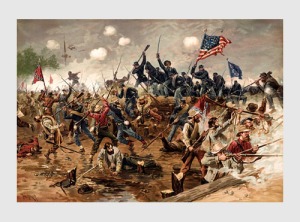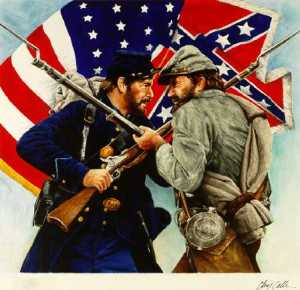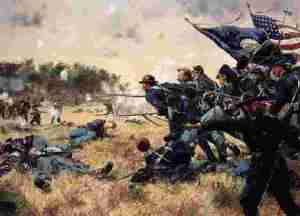 Other Names: The Centralia Massacre
Other Names: The Centralia Massacre
Location: 60 miles north of Jefferson City (Audrain County)
Campaign: Control of Central Missouri
Date(s): September 23, 1864
Principle Commanders: Major A.V.E. Johnston [US], “Bloody Bill” Anderson [CS]
Description: At about 3:00 p.m., Union Major A.V.E. Johnston, with 155 men of the newly formed 39th Missouri Infantry Regiment (Mounted), rode into Centralia. The townspeople warned him that Anderson had at least 80 well armed men, but Johnston nevertheless led his men in pursuit. The Union soldiers soon encountered the guerrillas, and Johnston decided to fight them on foot. He ordered his men to dismount and form a line of battle. He then reportedly called out a challenge. Anderson’s men replied by making a mounted charge. Armed with muzzle loading Enfield rifles, the Federal recruits were no match for the guerrillas with their revolvers. Johnston’s first volley killed several guerrillas, but then his men were overrun. Most were shot down as they attempted to flee. According to Frank James, his younger brother Jesse fired the shot that killed Major Johnston. Of the 155 men in blue, 123 met their death.
Result: Confederate victory


